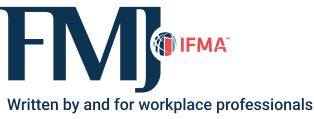Beyond Borders
Building a smarter, more responsive business model

The modern business environment is increasingly defined by geographic flexibility, technological advancements and a near-constant commitment to operational efficiency. Organizations worldwide are discovering that the best candidate for a particular role does not necessarily reside in the same city or even the same country. This has led many forward-thinking enterprises to adopt remote and hybrid work arrangements, effectively tapping into the global talent pool.
While human resource departments initially pioneered this wave of international hiring, other sectors, including facility management, have begun witnessing and reaping remarkable benefits from a borderless workforce. Not only does global talent pave the way for around-the-clock operations and cost optimization, it also redefines productivity through targeted remote support.
Transforming facility operation with global remote support
Facility operations cover a broad range of responsibilities, from day-to-day maintenance to long-term strategic planning. Historically, local FMs have juggled tasks that include work order processing, compliance tracking and vendor coordination, which often leaves them stretched thin. Embracing a global workforce allows these companies to unburden on-site personnel from routine administrative duties and reallocate that energy to tasks with higher strategic value.
Remote teams, for example, can manage incoming work orders for multiple facilities through centralized digital platforms. Instead of relying on site-specific staff to field requests, global personnel can oversee this process in real time, categorizing and prioritizing each query according to urgency and complexity. This structure ensures swift processing and provides standardized quality checks that can reduce the likelihood of oversight or miscommunication.
Another advantage is regulatory compliance. Different regions may have stringent safety, environmental or health mandates, and staying current on evolving regulations can be challenging. Specialized remote compliance teams can focus exclusively on monitoring legislative updates, scheduling inspections and ensuring facilities remain compliant. When these day-to-day hassles from local staff are removed, companies can let FMs devote more attention to high-impact strategies such as optimizing layouts, improving tenant experiences or deploying sustainable energy solutions.
Expanding workforce capacity without the cost
In many markets, labor expenses are on a steady incline. During the fourth quarter of 2024, nonfarm business unit labor costs grew by 2.2 percent, as a 3.8-percent increase in hourly compensation exceeded the 1.5-percent productivity gain. For the year ending in the fourth quarter of 2024, unit labor costs were up by 2.0 percent. Faced with rising wages and benefits, some organizations find it increasingly difficult to maintain adequate staffing levels for administrative and support roles. Yet FM is a mission-critical department that cannot afford to leave positions vacant or limit services due to budget constraints. This paradox between financial realities and operational necessities has motivated more businesses to search for cost-effective solutions.
Accessing a global talent pool lets organizations tap into regions where labor costs may be comparatively lower, allowing them to fill essential support roles without placing undue strain on budgets. This helps maintain operational continuity, especially for tasks that do not strictly require physical on-site presence. For instance, roles such as scheduling, data entry, procurement management and maintenance request coordination can all be effectively managed by remote professionals. With technological platforms for communication and workflow integration, physical distance no longer impedes efficient collaboration.
A key advantage of leveraging a globally distributed workforce is the ability to scale up or down as needed. During peak seasons or when a facility undertakes a new project — such as a renovation or expansion — additional administrative support can be swiftly onboarded without the long recruitment cycles typically associated with local hires. Conversely, once peak demand subsides, organizations can adjust remote team sizes without facing the intricate employment regulations that often apply to full-time, on-site staff. This flexibility lets companies maintain operational excellence under budget constraints and ensures that key processes remain robust without overspending.
24/7 facility oversight
FM seldom fits neatly into a standard nine-to-five schedule. Emergencies, tenant inquiries and critical system alerts can arise at any hour, which requires immediate response to prevent minor issues from snowballing into major incidents. A widely distributed global team, with members spanning various time zones, offers the flexibility to provide this crucial around-the-clock support.
Whether it involves responding to an after-hours security breach or monitoring temperature controls during a weekend, remote professionals can tackle problems in real time. Immediate intervention is particularly vital for facilities that house sensitive equipment or store valuable assets. Even outside normal business hours, global team members can coordinate with local vendors, dispatch technicians and manage communications with stakeholders. This results in a continuity of service that ensures disruptions are minimized and tenant satisfaction remains high.
Beyond emergency response, a borderless team contributes to proactive FM. Real-time data tracking on equipment performance allows remote analysts to spot irregularities or identify potential failures long before they trigger alarms. Sensor-based systems tracking temperature fluctuations, for example, can alert global personnel to investigate anomalies, create a plan of action and notify on-site staff. These preventive measures can dramatically reduce downtime and repair costs by addressing technical problems in the early stages. In essence, 24/7 facility oversight powered by a global workforce safeguards operational consistency and preempts costly failures – a highly valuable asset for any organization aiming to protect its facilities around the clock.
Leveraging technology & global talent for smarter FM
The expansion of Internet of Things (IoT) devices, automation tools and AI-driven analytics platforms has drastically altered the FM landscape. These technologies generate large volumes of data (on temperature, energy consumption, equipment performance and foot traffic) that can be leveraged to optimize operational efficiency and prolong the lifespan of key assets. Yet the sheer volume of information demands continuous oversight, which includes interpreting raw data to configure predictive algorithms that forecast maintenance needs.
Remote teams specializing in technology can monitor complex systems around the clock and flag potential bottlenecks or anomalies as they emerge. For example, IoT sensors on HVAC units can send performance data to a remote operations center, where specialists run predictive maintenance models. These professionals then relay actionable insights to local staff, who can schedule timely inspections or replacements of components before a breakdown occurs.
Moreover, AI-enabled systems increasingly require ongoing calibration, new data inputs and regular performance reviews to function optimally. Global tech experts can provide this ongoing maintenance and improvement. Working across multiple regions gives them the upper hand to introduce best practices gleaned from diverse environments — lessons that might remain siloed if each facility or region operated in a specific location for the longest time. Through this combination of advanced technology and global collaboration, FMs can make well-informed, data-driven decisions that reduce energy costs, minimize downtime and enhance tenant comfort.
Building a resilient & scalable FM model
In an era marked by economic uncertainty and rapidly changing labor markets, organizations benefit from a workforce model that can adapt quickly to shifting demands. Incorporating a borderless strategy into talent acquisition offers precisely this kind of flexibility. Rather than relying solely on local hires or investing heavily in full-time, on-site staff, companies can strategically fill skill gaps through remote partnerships. The hybrid model allows in-house personnel to focus on priorities that require hands-on expertise or in-depth knowledge of local regulations, while remote teams excel in administrative, analytical and monitoring tasks.
Scalability is another distinct advantage of this setup. If a business suddenly gets inundated with new clients or must handle complex renovations across multiple sites, the global framework can expand to accommodate increased workloads. Likewise, if a business needs a contract or shift, the organization can restructure its remote workforce accordingly, without the hurdles of local labor regulations or lengthy severance negotiations.
Moreover, a hybrid global model fosters resilience in the face of crises. Should natural disasters, economic downturns or unexpected local labor shortages occur, remote teams can help maintain essential services. They can also assist in organizing recovery efforts, coordinating with vendors in multiple time zones and sharing best practices to handle disruptions.
Companies that limit their talent search to one geographic area risk missing out on crucial skills and diverse perspectives that fuel innovation. Just as a monoculture is vulnerable to disease and environmental changes, a geographically homogenous workforce can lack the varied experiences and viewpoints needed to thrive in the complex global market.
Strategic broadening of horizons can be the critical differentiator between a company that thrives and a company that merely survives in the dynamic 21st century market. Now is the best time to view the global landscape as a talent marketplace.

Pranav Dalal’s entrepreneurial journey began in mid-2001 when he traveled from Los Angeles to India, rented an office, hired five employees and started Office Beacon—all within one week. In 2012, Dalal expanded Office Beacon's global footprint by taking over service facilities and employees from a subsidiary of VistaPrint in the Philippines. Now, with more than 5,500 full-time global employees, Office Beacon operates in India, the Philippines, South Africa and Mexico.
Read more on Operations & Maintenance , Leadership & Strategy and Project Management or related topics Best Practices , Workforce Development and Staffing
Explore All FMJ Topics









